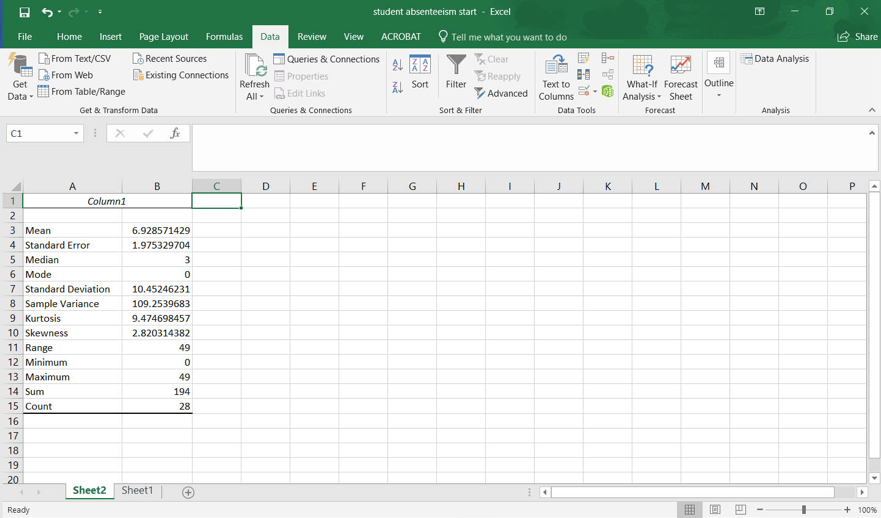SWK 3401.4-2.5 Understanding Skew and Kurtosis
Introduction
The purpose of this activity is to learn how to interpret the information about skew and kurtosis that Excel provides. We will work with the output from our earlier descriptive statistics analysis of the student absenteeism data.
Instructions
- Open the file called student absenteeism descriptive statistics finish.xlsx and switch to Sheet 2. (Or, just use the box reproduced below.) This is the output from our earlier descriptive analyses.

- The result for the skewness analysis was: 2.82 which we can interpret if we know the “rules of thumb” about skewness values.
- The value is positive (greater than 0), which means the distribution is “right” tail skewed—the tail on the right side is longer and the distribution is shifted to the left. [If the value was negative, less than 0, the distribution is “left” tail skewed—the tail on the left is longer and the distribution is shifted to the right.]
- We want to know “how much” it is skewed. The interpretation rules are:
- oIf skewness is less than -1.0 or greater than +1.0, the distribution is highly skewed (asymmetrical or non-normally distributed).
- oIf skewness is between -1.0 and -0.5, or it is between +.5 and +1.0, then the distribution is considered to be moderately skewed (asymmetrical).
- oIf skewness is between -0.5 and +0.5, the distribution is considered relatively symmetrical.
- Our value of 2.82 is greater than +1.0, therefore we conclude that the distribution of the days absent values is highly skewed.
- The result for the kurtosis analysis was: 9.47. This is a bit more challenging to interpret without conducting statistical analyses about its significance. But, one rule in social science research is that values outside of the range from -7 to +7 are problematic; others suggest using the values of -2 to +2 as the range to consider. Eitehr way, our value of 9.47 indicates considerable degree of kurtosis in our sample.
- In summary, our classroom is not distributed in a “normal” way. This concludes our current learning activity.
